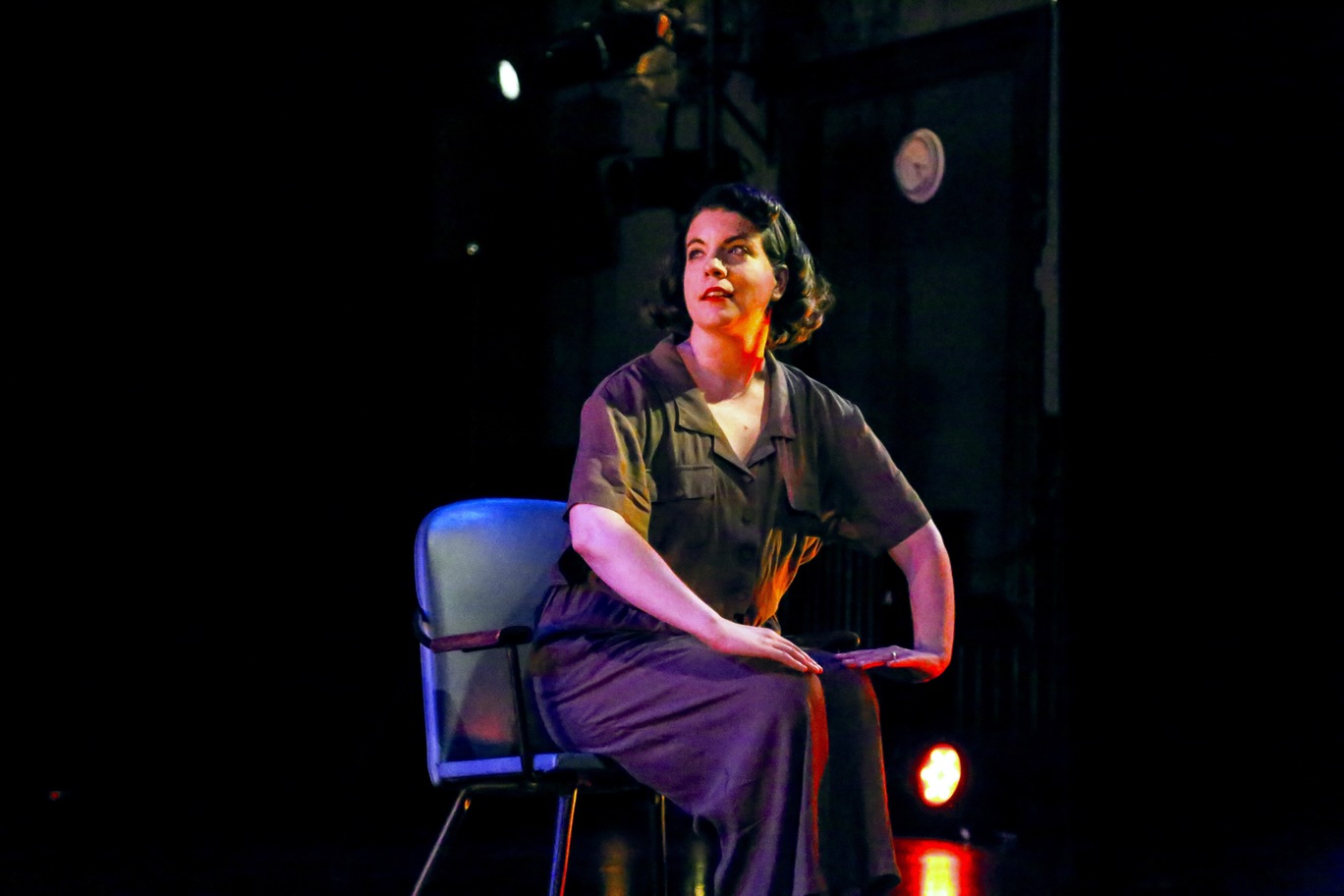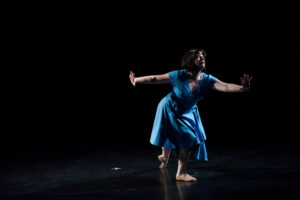
HUDSON – Maggie Cee got the performing bug at a young age.
Cee, who has been a resident of Hudson for about three years, said she grew up in a “one traffic light town” in Connecticut.
She has had a lifelong love of performing.
“I was a little girl who loved ballet, tutus and sparkles, and spent a lot of time forcing my sibling and our friends to perform in shows I created,” she said.
Cee was hooked after the first time she went on stage for a ballet recital when she was eight.
While that is a “common experience” for some children, as she grew older she was drawn to dance, writing and expression. Cee channeled her creativity into ballet and modern dance training.
And, every time she thought about taking a different path, “I was drawn back to dance and performing,” she said.
She performed her solo show, “Ladies at a Gay Girls’ Bar, 1938-1969,” at Amazing Things Arts Center in Framingham earlier this month. She has performed it previously in Cambridge, Provincetown and Greenfield, Mass.; Providence, R.I.; Hartford, Conn.; and Brighton and Manchester, United Kingdom.
Cee brings the show to life thanks in part to her education and training as a day student at Miss Porter’s School in Farmington, Conn. Going to an all-girls school that focused on academics helped her out, and she was able to study modern dance and choreography there as well as at her ballet school.
“I was dancing, between the two, around 20 hours a week by the time I was a junior in high school,” said Cee.
Cee developed her solo show in 2017, and it uses oral history interviews from the Buffalo Women’s Oral History Project and “Whipping Girl” by gender theorist Julia Serano as a source of inspiration. She plays herself as a teenager trying to “figure [out] my place in the world” and brings the audience along with her as she explores queer history.
She plays three fictional historical femme characters, using dancing to transition between the characters and highlight their emotions. Her performance also utilizes props, books, soundscapes, voiceovers and music “to bring the history of 20th-century lesbian bars to life — illuminating the feminine women whose stories are too often forgotten.”
She believed it is important to tell her story. “I know how powerful it feels to me to connect with other people’s stories,” she said.
Others have told her that the stories in the show resonate with them, with the best compliment she ever received being that she put into words things they had thought about.
Cee came out as a teenager in the late 1990s, and she got “a lot of mixed messages about gender and femininity” that were influenced by the lesbian feminist movement of the 1970s and 1980s. She knew being more androgynous or less feminine to fit in with peers did not feel right.

She added, “I felt my femininity didn’t fit.”
She became involved in activism at Emerson College, where she attended school from 2001 to 2005, and wanted to combine it with performing.
With the college having a dance major that also incorporated theater, it encouraged her to “create work that included text and speaking,” she said.
Cee felt lucky to have taken this curriculum in a time when the Goodridge decision came down from the Massachusetts Supreme Court in 2003 and held that the constitution requires the state to legally recognize same-sex marriage.
Serano’s writing in “Whipping Girl” shaped Cee’s understanding of “gender as something that can be chosen and constructed, but also for some people deeply and internally driven,” she said.
She said, “I am indebted to Serano for a lot of how I think about gender and learned to stand firmly and create space for who I am.”
The one thing she wants people to understand with her show is that LGBTQ+ history goes as far back as human history.
She said, “In this moment of panic about teaching about and affirming gender and variance, I think we can gain a lot of strength from remembering queerness is not new or a fad. It’s always been here.”
The importance of sharing her story and those of women in history was simple.
“I think as queer people we come from families that don’t always share the same identities, so telling stories … is a really important way that people build community,” said Cee.
“Telling my story and also telling the historical stories that are in the piece are part of that lineage,” Cee said.
She said people want to know they are not alone in the world and find their identity, which may help others do the same.
Cee said, “Telling stories and sharing where we came from and what people have overcome gives people the resilience to figure what they need to do to be themselves and how to help other people along the way.”
For more information, go to www.thefemmeshow.com/maggie-cee.html.












